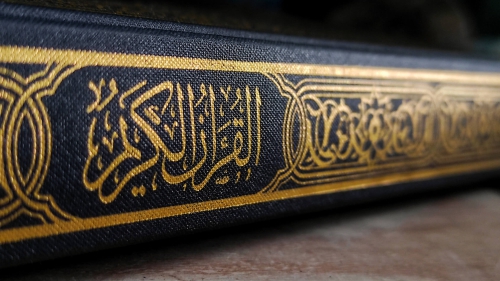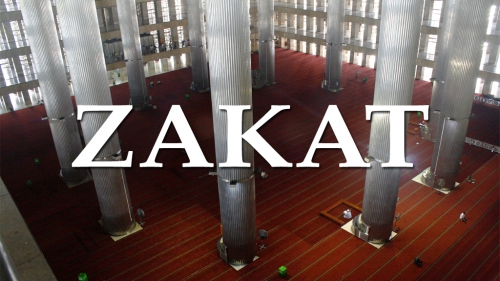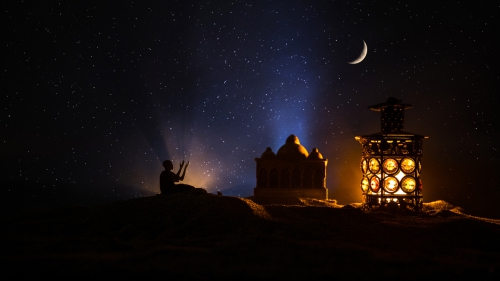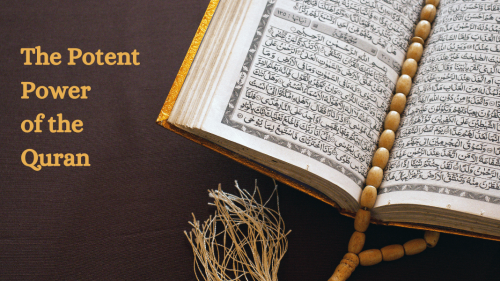Case of Najran Christians: Religious Pluralism and Anti-Muslim Polemics

Al-Mughirah b. Shu’bah reported: “When I came to Najran, they (the Christians of Najran) asked me: ‘You read ‘O sister of Harun’ (i.e. Maryam, Mary, the mother of Prophet ‘Isa, Jesus) in the Qur’an, whereas Prophet Musa (Moses) was born much before ‘Isa. When I came back to Allah’s Messenger (pbuh) I asked him about that, whereupon he said: ‘They (the people of the old age) used to give names (to their persons) after the names of holy prophets and pious persons who had gone before them” (Sahih Muslim, Book 38, Hadith No. 13).
What follows are several observations on the content and also context of this report (hadith).
The case of the Najran Christians
As part of the internationalisation of his revealed message and his prophetic mission, Prophet Muhammad (pbuh) invited the Christian population of the Najran region to Islam. Najran was situated in the southwestern part of the Arabian Peninsula near Yemen.
In order to intensify his da’wah efforts and general communication with the people of Najran, the Prophet sent al-Mughirah b. Shu’bah, a prominent companion of his, to the place. Hence, al-Mughirah was at once a religious and political emissary of the Prophet.
The above hadith denotes a window into nature as well as scope of al-Mughirah’s task. It also shows how challenging, yet tricky, the assignment was.
Later as the communication and relations between the two sides grew stronger, a Christian delegation from Najran decided to visit the Prophet in Madinah. The Prophet met them nowhere else but in the shades of his mosque. The members of the delegation numbered 60 and they were led by a sizable group of their scholars and priests (perhaps 45). When the time of one of their prayers was due, they were allowed to pray right inside the mosque. They prayed facing the East (the mosque’s qiblah or prayer direction was towards the South). The Prophet took care of their accommodation and of the other aspects of hospitality as well.
Despite fierce and unrelenting discussions, the Christian delegation refused to budge and acknowledge Muhammad as prophet. For their part, furthermore, they even tried to convert the Prophet - and Muslims - to Christianity. Even though the Christians stuck to their guns, a mutual agreement concerning bettering relations was worked out. The two became above all political and economic allies.
Islam and religious diversity
The case of the Christians of Najran signifies Islam’s approval of religious diversity and tolerance. If religious pluralism indicates the legitimacy of the presence of diverse religious beliefs and practices, with people enjoying their rights justly and discharging their duties responsibly, then it can be said that Islam promotes the idea of religious pluralism as well.
Islam’s position is very clear. There is no compulsion in religion; people are free to choose whatever religion, ideology, or philosophy they want; for each one is his own choice and everyone will face the consequences of his preference(s). Each and every person is the king of his own castle.
However, these tenets are valid and will work only in environments where freedom, justice and integrity prevail. Islam as the final revelation to mankind wishes to present its case to the world and to be heard. It does so by reviewing and correcting the past wherein the earlier revelations had been distorted beyond recognition, challenging the present which is fraught with outcomes of the interplay of opposing burdens (ideological forces) of history, and charting an independent and its own future course.
Islam furthermore wants to project the truth and falsehood as such, neither adding to nor subtracting from them, and to remove any obstacles, material or immaterial, as may misrepresent either one of them. Both the truth and falsehood ought to be discernible, accessible and understandable at all times. They are to be the monopoly of nobody. They are not to be controlled either.
Since its inception, Islam wanted to create free milieus in which people should be able to say “yes” or “no” either to the truth or to falsehood. They are expected to do that freely and under no influence of deceit or manipulation of any kind. As the ultimate light, Islam never feared darkness; as the ultimate truth, it never feared delusions and errors; and as the ultimate enlightenment and knowledge, it never feared misguidance and ignorance.
All Islam ever wanted was freedom, dialogue, interactions and excellence. Genuine Islamic culture and civilization were about promoting and facilitating these noble values, as well as about demoting and impeding their antitheses, as much in theory as in practice. Islam stood for freedom and justice because it knew that no manifestation of misguidance and error stood a chance in the presence of heavenly truth and guidance. Islam, coupled with freedom, without a doubt, is irresistible.
In the case of the Najran Christians, they were made acquainted with the latest message (revelation) of Islam revealed to the final messenger, Prophet Muhammad (pbuh); they were invited to it; they were shown utmost kindness and hospitality while in Madinah and were allowed to debate the message; when they refused to embrace Islam and accept Muhammad as prophet, their choices were respected; and finally, a political pact and collaboration between them and Madinah were agreed upon and a representative of the Prophet was sent with them to administer and further enhance the relations.
The geographical region of Najran was integrated as such into the domains of the rapidly expanding Islamic state. Doing so was an unmistaken sign not only of Islamic tolerance towards others, but also of its readiness to peacefully and productively coexist with them. Eventual and total absorption was likewise intended. It was agreed that the Christian population of Najran will pay the jizyah (a tax on free non-Muslims under Muslim rule) and live undisturbed.
This indeed connoted the genesis of a true religious (Islamic) pluralism characterised by mutual respect, understanding, dialogue and cooperation. The goals were mutual worldly interests and the interests of the reality of the spiritual kingdom as much as possible. The situation was a far cry from some modern genres of religious pluralism according to which the blanket recognition and affirmation of diverse religious paths as equally valid are served.
While the Prophet’s type of pluralism was dynamic, enlightening, probing and even provoking, the latter are the polar opposite: stupefying, sluggish and even somewhat hypocritical. Moreover, the former championed the truth and people’s truly ontological well-being, whereas the latter championed epistemic and moral relativism, coupled with philosophical scepticism and agnosticism. Inasmuch as the former was heaven-centric, the latter are humanistic or human-centric.
Knowing what was at stake the Prophet went to great lengths to bring home the intended message. The subject of mubahala (to invoke a curse on a party that was lying about its religious convictions) was mooted, but the Christians recoiled and opted for a less dramatic way out of the conference.
This way the Prophet demonstrated that despite potential peace treaties and socio-political and economic alliances, paths towards the truth should always be explored. That should be done in such wise and ingenious ways that neither the interests of the truth nor of alliances get endangered in the long run.
Unquestionably, there is only one truth, just as there is only one God and one existential reality and guidance. Asserting that there are multiple truths, multiple deities (gods), multiple existential realities and guidances is as irrational as it is unworkable. It is not a viable blueprint for the prospects of long-term coexistence. When all is said and done, such has the potential to solve nothing, or very little.
The origins of anti-Muslim polemics
The above hadith shows that anti-Muslim polemics were as old as the commencement of the Islamic cause. The environments of Makkah and Madinah were truly cosmopolitan, sometimes yet internationally toxic. The Prophet faced challenges and threats from polytheist Arabs, the Jews, the Christians, and from hypocrites cutting across all social groups. In unison and separately, they left no stone unturned in attempts to assail the integrity of the Prophet’s personality and his work. Such were the scale and reach of the Prophet’s mission, and the fervour, along with heterogeneity, of his enemies’ hostilities, that virtually all possibilities were exhausted. Nothing genuinely new could the subsequent foes of Islam invent.
Herein lies a very important principle. All “authentic” accusations against Islam and the Prophet have already been concocted and articulated. At the same time, they have already been answered, either directly by the Qur’an and the Prophet’s Sunnah, or indirectly by the wisdom of some of the Prophet’s companions.
The subsequent accusations were repetitions, remodelling of the original fabrications and lies, or were simply meaningless and absurd innovations. If the latter had any worth or consequence, they would have been conceived, one way or another, by the endless circles of enemies during the Prophet’s era and by their constant plotting, locally and transnationally, conceptually and practically.
Which goes to show that, today, neither non-Muslims in their attacks on Islam and its Prophet, nor (many) Muslims in their defending of them, are adequately knowledgeable about Islam and the Prophet. Their example is that of a Sisyphean job that requires a lot of work and yet will never be fully completed, nor will ever fully satisfy its executor(s). If non-Muslims and Muslims really know the subject matter, they would quickly realise that what they are up to has already been dealt with, or is inconsequential.
Maryam (Mary) the sister of Harun (Aaron)
The above mentioned hadith is a good case in point. When al-Mughirah b. Shu’bah was sent to Najran he had to put up with a barrage of questions, objections and denunciations by the Christian populace. One of them stood out and he was unable to respond on his own. Therefore, he sought the advice of the Prophet himself.
The Qur’an calls Maryam (Mary), the mother of Prophet ‘Isa (Jesus), “the sister of Harun (Aaron)” (Maryam, 28). The Christians of Najran took this narrow-mindedly and raised an objection to the effect that such a name of Maryam was improbable and historically inaccurate, for there was a long historical gap between Prophet Musa - whose brother was Harun - and Prophet ‘Isa. There was approximately 1,500 years separating them.
However, when the Prophet - the teacher of all teachers whose revealed knowledge and wisdom signify the criterion and the fountainhead of all knowledge and wisdom - was informed of this, with remarkable calmness and confidence he replied: “Why didn't you tell them that they (the people of the old age) were named after their prophets and righteous people before them?”
This should have been the end of story for both Muslims and non-Muslims, because the question was raised and was emphatically answered. It should have been the end of the matter. Alas, such by no means was the case.
As far as non-Muslims are concerned, this baseless accusation never stopped constituting a cornerstone of their - albeit principally Christian - anti-Muslim campaigns. For example, as early as in the first half of the 8th century, while responding to a letter written to him by Caliph ‘Umar b. ‘Abd al-‘Aziz (‘Umar II), Byzantine Emperor Leo III (d. 741) called attention to the fact that the Qur’an considers Mary the sister of Aaron.
Around the same time, John of Damascus (d. 749), a celebrated Christian priest, monk and apologist-cum-polemicist, denounced the Qur’anic “claim” that Mary was “the sister of Moses and Aaron”. He regarded the matter as part of “the heresy of Ishmaelites”. In passing, John of Damascus could be held the father of Christian anti-Islamic polemics and his two works: “Heresies (the Heresy of Ishmaelites)” and “Disputation between a Christian and a Saracen (Muslim)” were seminal in the field.
Moreover, Riccoldo da Monte di Croce (d. 1320), an Italian Christian missionary and polemicist, cried to “the Queen of Heaven” in his “Letter to the Blessed Virgin Mary: “And about you he (Prophet Muhammad) has written - for I have read it in Arabic in so many places in the Qur’an - that you, O Virgin Mary, were the ancient Mary who lived at the time of Moses. Consequently he (Prophet Muhammad) expressly declares that your father was Amram, and that Moses and Aaron were your brothers.”
Even Martin Luther (d. 1546), a legendary theologian, author and a seminal figure in the Protestant Reformation, addressed the topic and considered it a factual error in the Qur’an. He wrote: “In the chapter Maryam, that is, Mary, it says that Mary the mother of Christ was the sister of Aaron. It is true that Moses and Aaron had a sister named Mary and all three were children of one father, ‘Imran, as Exodus 2 says. But between that Mary and this Mary, the mother of Jesus Christ, are over 5,000 (?) years, and that Mary died in the desert whereMoses led the children of Israel out of Egypt” (Adam S. Francisco).
The voices of theological dissent continued to reverberate well into the modern times of the 20th and 21st centuries, as the continuous rumblings of Zakaria Botros, a former Orthodox Coptic priest, by way of illustration demonstrate. The infinite opportunities engendered by the Information or Computer Age were fully capitalized on as well for the purpose. As a result, the same theme is featured prominently on a great many Christian websites that are dedicated to “responding to the questions, objections and arguments of Muslims”, to “debunking incorrect Muslim claims”, and to “converting Muslims to Christianity”.
As far as Muslims are concerned, on the other hand, why did they not just stick to the Prophet’s answer? Why did they try to add to, embellish and “enhance” the existing wisdom, using questionable sources or merely their own intuition, and thereby allow Christian polemicists greater leeway in their operations? Why did not Muslims walk in the footsteps of al-Mughirah b. Shu’bah?
As for instance, Ibn Kathir said in his Tafsir: “(O sister of Harun!) referring to the brother of Musa, because she was of his descendants…It has also been said that she was related to a righteous man among them whose name was Harun and she was comparable to him in her abstinence and worship.”
Similarly, Maududi said in his Tafhim al-Qur’an: “‘Sister of Aaron’ may either mean that Mary had a brother of the name of Aaron, or it may mean that she belonged to the family of Prophet Aaron.”
Fakhruddin al-Razi in his Mafatih al-Ghayb enumerated four different views as regards the identity of Harun whose “sister” Maryam was.
If Muslims were not careful in developing appropriate methodologies for dealing with Christian anti-Muslim polemics, they may be dragged into a quagmire. This is the case on account of the intentions and hidden agendas of Christian polemicists, and on account of the fact that the Christians cannot, even if they wanted, offer anything useful in this particular regard. Such discussions, it follows, normally unfold along the lines of beating around the bush, or about outmanoeuvring - and occasionally outshouting - each other.
It is a mainstream Christian view that “as it stands the sources dealing with the life of Ann, Joachim (Mary’s parents) and Mary do not mention brothers and sisters of Our Lord's mother. The canonical gospels - as we know - do not speak of Mary's parents (either). What we know about them comes from tradition and from apocryphal writings” (Father Johann Roten).
In other words, there is no way the Christians can know who the siblings of Mary were, hence - one wonders - how they could profess essentially anything concerning the area under discussion.
Rejecting modern accusations and lies
Applying this same principle can help repudiate a host of other fabrications and lies that are the product of recent times. Most of such fabrications are the result of certain islamophobic tendencies, especially in the West following the initiation of the colonisation and westernisation enterprises.
Some of such accusations and lies are in the sense that Islam is a religion of violence and that it was spread by the sword, that Prophet Muhammad was a violent man who sowed barbarity, that Prophet Muhammad was a paedophile because he married ‘A’ishah when she was six years old and he consummated his marriage when she was nine years old, that Islam did not ban slavery, that Islam mistreats women, that the Qur’an is mistaken by claiming that the Jews worshipped Ezra (‘Uzayr) as the son of God, etc.
These and other similar accusations could be rejected simply by saying that they are inventions of subsequent times either due to ignorance or ulterior motives. If those issues were real or problematic, the numerous enemies of Islam and the Prophet would have been more than happy to hasten to raise them as such. But they did not, not because they were not intelligent or insightful enough - like today’s islamophobes and agnostics - but because there was nothing to raise and object to. The mentioned themes are the distortions, fallacies, misinterpretations, exaggerations and fantasies of latter times, fuelled by radical anti-Islamic polemics and islamophobia, together with the liberal and relativistic thought patterns. Positively, none of the mentioned censures and “faults” dates back to the Prophet’s epoch, nor to the imagination of his contemporaries.
The flawed conceptual frameworks and equally flawed methodologies of the mentioned epistemological dispositions, primarily, need to be targeted, rather than the recurring arbitrary and whimsical elements of thought. While the latter is the effect, and so, relatively fluid and a moving target, the former is the root cause and is constant. Additionally, the latter amounts to no more than speaking out of caprice and following assumptions as well as what human souls desire; however, for none of these an authority had been decreed, and none can avail anything against the currency of the truth.
This whole attitude is summarised in the words of al-Baydhawi who said in his commentary of the Qur’an, Anwar al-Tanzil wa Asrar al-Ta’wil, pertaining to the Qur’an’s criticism of the Jews that they worshipped Ezra (‘Uzayr) as the son of God. Al-Baydhawi said that the Qur’an, first and foremost, meant the Jews of Madinah. The strongest proof that such was the truth brought to light by the Qur’an - and the Prophet - was that the Jews of Madinah were the addresses to which they never objected, nor contradicted it, even though they were dying to do so whenever and as much as possible.
That is to say, the silence of the Jews meant approval. Likewise, the enemies’ silence on the Prophet’s marriage(s), his conduct in war and peace, his treatment of men and women, of Muslims and non-Muslims, also meant that in their eyes there was still nothing wrong in those deeds. And to allege many centuries later, chiefly owing to intellectual myopias and ethics disorders of epic proportions, that the mentioned behavioural models of Islam and its Prophet Muhammad were improper, simply does not hold up. The issue is a matter of common sense.
Topics: Christians, Dawah (Outreach), Diversity, Freedom Of Religion, Islamophobia, Jews, Pluralism
Views: 5176
Related Suggestions

















